An ethereal spring bouquet of silvery iris and white flowers dusted with mimosa’s golden sweetness. Then, a lush, orchid-like, champaca vanilla infused with boozy, fruited liqueur and smoky guaiac. Finally, an extremely woody fragrance with masculine elements of burnt leaves, smokiness, and musk. That was the very surprising progression of Angélique, a chameleon scent that first filled me with visions of bridal white (and thoughts of how well it was named) before it astounded me by rapidly morphing into a completely different fragrance, one that was quite a pleasant surprise. In fact, at times, I was sniffing my wrist with much appreciation. Although the drydown changed things for me, there are parts of Angélique that can well be called “exquisite” or “beautifully lush.” This is a fragrance that is so evocative at times that I’ve just barely managed to stop myself from explaining its development solely in terms of a series of images. That said, please pay close attention to the photos in this review, particularly to the sharp changes in colour, style, mood, and background.
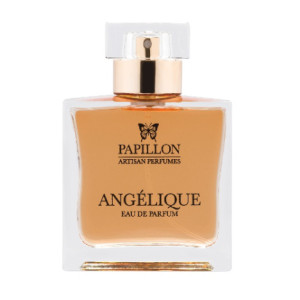
Photo: Fragrantica.
Papillon Perfumery (sometimes called “Papillon Artisan Perfumes“) is a fledgling, British, artisanal brand founded in 2014 by LizMoores. Ms. Moores is a self-taught perfumer whose first creation was Anubis, a fragrance that bowled me over with its magnificence and is one of the best things I’ve tried this year. The other two scents in her debut collection are Tobacco Rose andAngélique. All three perfumes were released in the U.K. in June, are eau de parfums in concentration, and are now carried in America by Indigo Perfumery.
On her website, Ms. Moores describes the character of Angélique as follows:
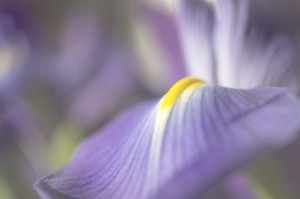
Iris Pallida. Photo: Mariola Szeliga via http://www.pixographia.com/photography/
Inspired by the astonishing beauty of the Iris Pallida flower, Angelique captures the delicate essence of a delightful Spring garden.
Cascades of French mimosa, osmanthus and white champac are woven between the powdered, violet facets of precious orris.
Virginian cedarwood and subtle notes of frankincense bring an ethereal light and delicate freshness to this tender composition.

Acacia mimosa. Source: cn.best-wallpaper.net
Fragrantica‘s entry page for Angélique has a note list, but it is missing a number of ingredients. Indigo Perfumeryhas the full, official perfume pyramid:
Top notes: French Mimosa, Osmanthus, White Champac
Heart notes: Orris, Myrrh, Frankincense, Cypress
Base notes: Virginian Cedar, Cedarwood Atlas, delicate Musks.
If a dictionary had perfume names to go alongside its definitions, Angélique‘s bouquet in the first 10 minutes would be right next to the descriptions of “ethereal,” “angelic,” and “bridal white.”
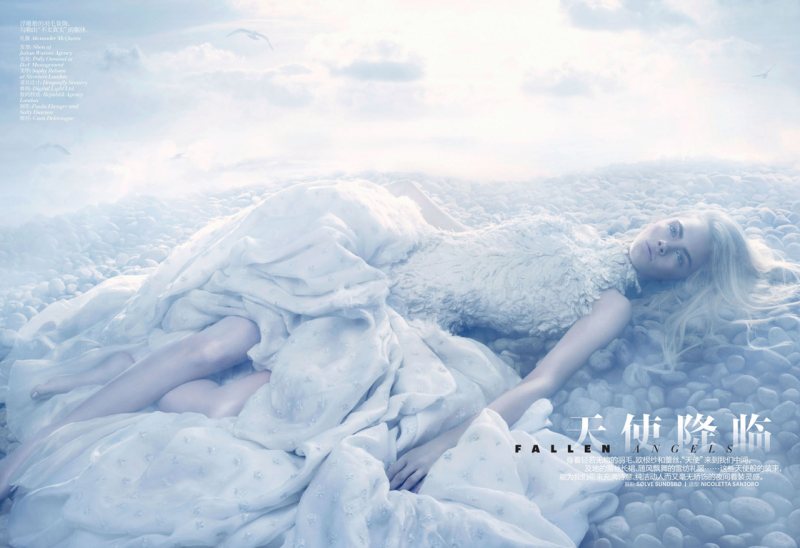
Photo: Cara Delevigne For Vogue China. Source: styledecorum.com
The perfume opens with spell-blinding whites and cool greys. It is dominated by a very floral iris that is infused by a minute speck of very rich, creamy magnolia, then covered by a dainty blanket of sweet mimosa (acacia mimosa). A subtle wisp of fruitiness lurks at the edges. By its side is a musk note that feels clean, but neither wholly white nor soapy. Behind them both are the tiniest slivers of something smoky and woody, but both elements are practically muffled and gagged at this point. The overwhelming, main impression, however, is of silver light and coolness, showered with the lightest dusting of mimosa pollen. It all feels positive bridal in its visuals, its delicacy, and its serenity.
The first time I tried Angélique, things were a little different and my head positively spun due to the mimosa. It is a flower that holds huge personal meaning for me stemming back to my childhood, and one whose aroma I love. In my first test, I applied less of Angélique than I did in subsequent wearings, and the mimosa was utterly glorious. It was as strong as the iris, if not stronger, and I was thrilled.
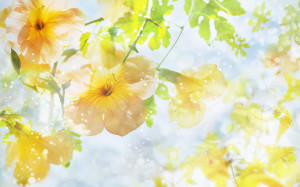
Source: wallpapersam.com
Instead of coolness, Angélique’s bouquet felt like the epitome of Spring in a lovely garden dappled with sunlight. I could not stop sniffing my wrists, especially as the iris only provided a glimpse of radiant white light. I’m not one who is enthused by iris, and I struggle with its various nuances, so I wasn’t hopping with quite so much excitement on subsequent tests when the larger application made the iris the dominant note. The vast canopy of yellow mimosa had shrunk down to a light dusting, the magnolia-ish undertones were significantly weaker, and the perfume was less sweet. On the plus side, nothing about the iris in this version smells rooty or carroty, and the cold stone feel is tempered by the warmth of the magnolia, subtle though it is in the opening minutes. Regardless of quantity, both versions of Angélique quickly end up in the same place, so I’ll continue with the more general development.
Angélique is one of those fragrances that cycles incredibly quickly through its changes in the opening 30 minutes. It takes exactly 5 minutes for mimosa to start to retreat, and for the champaca to creep forward. The iris begins to transform. Exactly 15 minutes into Angélique’s development, the silvery light changes and the perfume turns warmer, as the creamy white florals and the fruitiness begin to grow stronger.
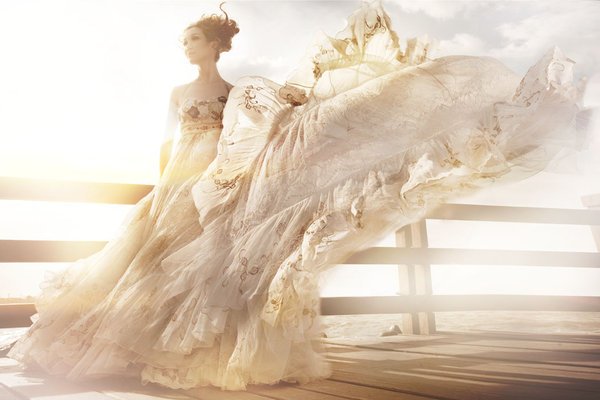
Photographer: Robin Alfian. Source: vk.com
A quick word about champaca, as not everyone is familiar with its aroma and it turns out to be a significant part of Angélique’s bouquet on my skin. Champaca is a tropical flower from the magnolia family whose rich, velvety aroma is a mix between magnolia and ylang-ylang. It is infused with great fruitiness, but its secondary nuances go beyond that simplistic description, as Ayala Moriel of Ayala Moriel Parfums explains so well on her site, Smelly Blog.
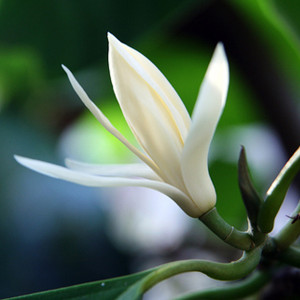
White Champaca, or Michelia Alba. Source: cudgegongnursery.com.au
Since many of the facets she describes are present on my skin with Angélique, and since White Champaca (or Michelia Alba) seems to be merely a slight variation on the same general theme, I’ll leave it to Ms. Moriel to explain:
Champaca is also related to Star Anise, and its scent in a way shares the spicy characteristics of star anise as well as the floral-fruitiness of magnolia. Unlike white magnolia, which is peach-like and very light, champaca has a penetrating, smooth and rich aroma that is reminiscent of tea, spices, and a floral note that is often compared to orange blossom. I personally think it is so unique it cannot truly be compared to orange blossom at all. Stephen Arctander describes champaca as similar to guiacwood (a waxy, smoky, tea-rose like wood from South America), yet at the same time mentniones that it is also used to adulterate champaca and therefore is not a very good way to describe champaca… I feel that until champaca is experienced, it is really difficult to describe it or imagine it.
I have experienced various champaca essences, including Champaca CO2, Champaca Absolute and Champaca Concrete. The champaca absolutes I have sampled varied a bit, one being more fruity and reminiscent of magnolia, and the other being more full-bodied, spicy and wine-like. In both cases they were intensely warm and rich but not in overpowering way. [Emphasis in bolding added by me.]
Only 20 minutes in, the champaca pushes the mimosa completely off-center stage, ends the silvered visuals, and begins to lead the iris on a merry dance.
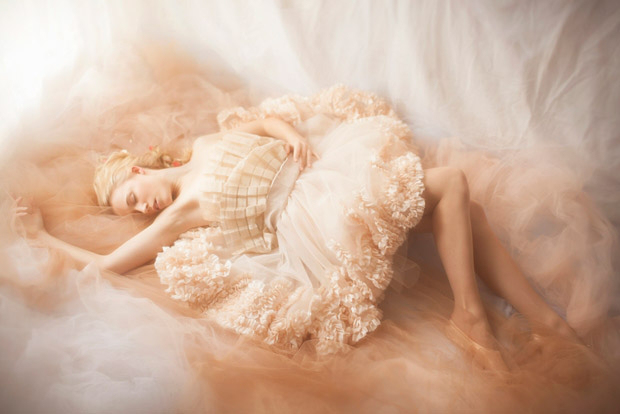
Photo: Vivienne Mok for Kaltblut. Source: .fashionising.com
With every passing minute, the champaca’s secondary nuances start to rise to the surface. There is a growing suggestion of something very fruity with liqueured sweetness that feels practically “boozy.” In the background, dry woods that smell like singed, smoky guaiac start to inch closer to the dancing duo on center stage. As a result, Angélique feels considerably less ethereal, pollinated, or white.
It takes a mere 30 minutes in total for Angélique to lose all its ethereal whiteness, and to turn into a completely different fragrance on my skin. In fact, Angélique now reminds me a distant cousin to LM Parfums‘ Sensual Orchid, though it is initially slightly cooler and more fresh at first. The distance between the two fragrances shrinks as Angélique grows more and more liqueured. The champaca kicks the iris to the curb and takes over completely, dancing a solo jig with wild abandon.

Photographer: Andreea Iancu for Baavi magazine. Source: Baavi.com
The champaca’s more magnolia-like tonalities are coming out, too, though there is nothing unctuous, buttery, cloying, or over-ripe about them here. Rather, the note smells like velvety petals covered with droplets of dew, then infused with orchid and a small dash of custardy ylang-ylang, before the whole thing is placed in a glass of fruity liqueur. Tiny, hushed clouds of frankincense gather in the far horizon, their tendrils slowly — very slowly — moving to caress the champaca’s petals.
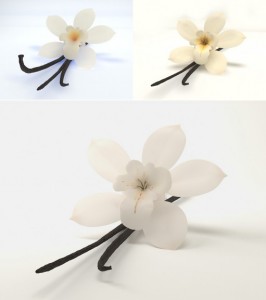
Vanilla flower. Source: visualphotos.com
If I didn’t know Angélique’s notes, I would swear that the perfume included a type of orchid. A growing touch of floral vanilla starts to weave in and out of the perfume’s top notes, and it is something that I’ve noticed each time that I’ve tested Angélique. In general, orchids can smell fruity as well as creamily lush, in the way it does in LM Parfum’s Sensual Orchid. Yet, in two tests, Angélique subsequently began to resemble the sort of floral vanilla embodied in Van Cleef & Arpels‘Orchidée Vanille as well. Angélique is about a thousand times richer, fruitier, woodier and smokier than Van Cleef scent, but I’m telling you, my skin radiates a floral vanilla tonality whenever I wear it. The aroma is not purely or authentically vanillic in nature, nor is it a major element that lasts long, but something about the champaca absolute that is used in Angélique does funny (and wonderful) things on me.
For over an hour, Angélique radiates an addictive blend of velvety champaca with boozy fruits, floral vanilla, woods, and smokiness. All of it feels very airy, but strong. I don’t think Angélique has the very saturated, concentrated feel of Tobacco Rose, and it definitely doesn’t have Anubis’ density or chewiness, but it’s still a very rich scent. It’s also very potent up close where its full-bodied notes really glow. The sillage is moderate at first with about 3 inches in projection from 2 large smears, before Angélique eventually turns softer at the start of the second hour. At that point, the perfume hovers about 1-1.5 inches above my skin where it remains for a while.
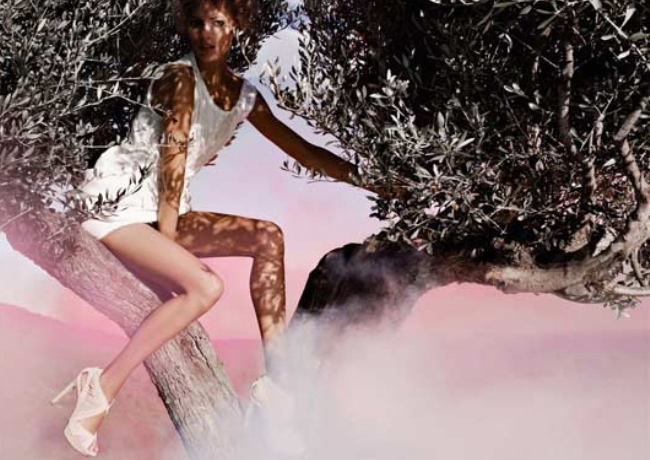
Photographer: Karl Lagerfeld for Fendi, 2010 Spring Campaign. Source: fauxionista.com
Around the middle of the second hour, the woods in Angélique surge forth, and the perfume turns fractionally drier. It’s still a champaca and “orchid” floral scent with boozy fruits and definite vanillic undertones, but the lightly smoked woods are no longer a suggestion on the horizon. To my regret, there is absolutely no mimosa on my skin. There is also no iris, osmanthus, or any of the latter’s apricot tonalities. The “fruits” in Angélique are abstract, and the aroma smells more like the rich, wine-y aroma described by Ayala Moriel, mixed in with a good dash of some liqueur.
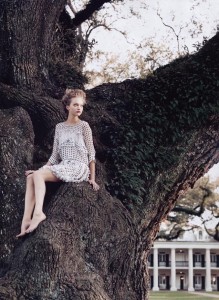
Gemma Ward by photographer Arthur Elgort for US Vogue, 2004. Source: inspirationbycolor.com
All thoughts of Orchidée Vanille mixed with Sensual Orchid begin to fade at the start of the 3rd hour, as the woods turn smokier and a singed guaiac aroma begins to loom over the white flowers. The champaca is still a key player, but it’s no longer noticeable in a clearly delineated, strongly floral way. Instead, its liqueured fruitiness and creaminess are now completely intertwined with the smoky woods. The “vanilla orchid” note is vanishing fast as well. From the sidelines, the osmanthus suddenly appears but most noticeably in terms of an undertone of Lapsong Souchong tea. I suppose it could come from the champaca as well, but I think it’s the osmanthus. Around the same time, Angélique turns slightly grainy and powdery in feel. It might be the mimosa returning to pollinate the smoky woods, but there is something in the note that feels more like coumarin tonka. It’s as though a textural graininess has fallen atop the boozy, smoky woods that now dominate the perfume.
Angélique has now turned into something which is a world apart from the ethereal, silvery, iris angel of its opening moments. From the start of the 3rd hour to the end of the 5th, the visuals parallel this development:

Photographer: Will Davidson for Australian Vogue, 2014. Source: models.com
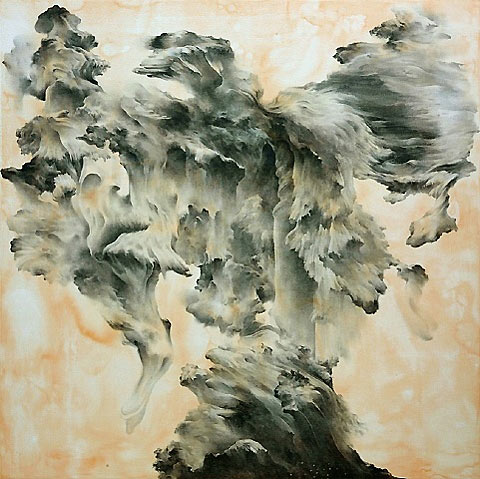
Painting by Moon Beom via lostateminor.com
I found it to be an astonishing transformation from the opening bouquet, but all three times that I’ve worn Angélique the perfume follows the same path on my skin. In fact, I’d say that the fragrance goes from feeling wholly feminine in nature to a scent that is quite unisex with its dash of masculine elements. On me, at least.
It is also a scent that seems to transition from Spring to Autumn, as the woods end up becoming the dominant note on my skin. Angélique’s note list includes cypress, cedar, and incense, but all I can think of is guaiac wood with its singed, smoky dryness. On occasion, it can also smell like burning leaves in a large bonfire. All of those things are emanating off my skin here as well. At the same time, the wood note in Angélique continues to be lightly infused with fruity liqueur, as well as a growing touch of white musk. The end result frequently reminds me of Imaginary Author‘s Memoirs of a Trespasser, except Angélique is much smokier and I didn’t find it to smell either powerfully synthetic or painfully unpleasant.
From the start of the 7th hour onwards, Angélique is a masculine-feminine play on autumnal woods and burning leaves, all infused with clean musk:
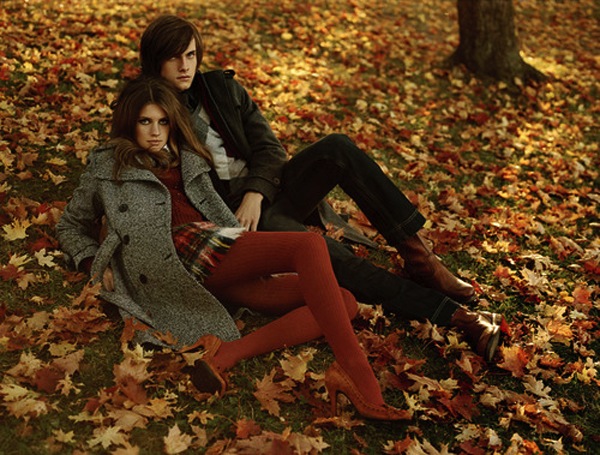
Source: louiseroe.com
Personally, I wasn’t keen on the drydown. My skin amplified the musk to the point that it felt too sharp and too clean. It also took on an increasing touch of soapiness, which I never enjoy. In Angélique’s final hours, all those aspects were extremely prominent indeed. The fruity liqueur had largely faded away, so I didn’t have that as a buffer, and the smokiness of the dry woods felt too sharp or rough to me as well. Angélique finally died away as desiccated woods infused with an unappealing, almost laundry-like musk.
All in all, Angélique has generally soft sillage and good longevity. I’ve talked about the projection numbers earlier, but Angélique turns into a skin scent on me after roughly 4 hours. In terms of duration, it consistently lasts over 8 hours. With a smaller quantity, I had 8.5 hours; with a larger amount (about 1/3 vial or the equivalent of 2 good sprays), that number rose to just over 10 hours.
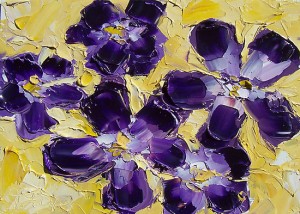
Painting by Trisha Lamoreaux.
Like its siblings in the Papillon line, Angélique has received good reviews. For I Scent You A Day, it was “instant love,” a fragrance that felt centered on violets, leaves, and patchouli as much as iris. The review reads, in part, as follows:
When I tried Angelique I adored it instantly and even more so as it bloomed and grew into its middle and latter phases. However, and I think I am not alone here, it is very hard to describe. I was thinking of violets and dried leaves and patchouli, when in fact, this is all about the Orris root, mimosa and the Iris.
In fact I wasn’t wrong about the violets because some aspects of Iris can smell violet-y in a rooty, grown up non frivolous sort of way. Couple this with osmanthus (think apricot blossom) and yellow, summery mimosa and you might be starting to get the picture. […]
The notes are hard to imagine on paper, but when they’re all singing together in one voice like a choir, you get something quite beautiful that is a combination of violets, the lightness of a petal, a sandy base, some green notes, an blast of Iris and the kind of longevity you usually only get from Andy Tauer.
It’s an unusual combination of a bouquet on the turn: all yellowing and dried up, coupled with the youngest violets and the greenest of leaves. Because of its original and unexpected combination of notes, it is both one of the most perfect new perfumes I have ever smelled and the hardest to write about.
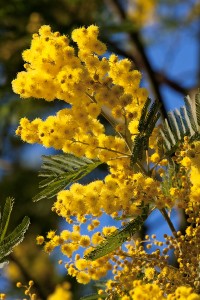 For Tara at Olfactoria’s Travels, Angélique felt like a classic Guerlain, and turned from a Spring bouquet to a pillowy, patisserie-like confection that felt very comforting:
For Tara at Olfactoria’s Travels, Angélique felt like a classic Guerlain, and turned from a Spring bouquet to a pillowy, patisserie-like confection that felt very comforting:
Angélique immediately makes me think of classic French perfumery. It is decidedly Guerlain-esque in feel at first with its combination of high quality iris and almond-like mimosa. It has a gentle character but doesn’t lack presence. The fuzzy apricot tone of osmanthus adds a subtle fruity accent. There’s a gorgeous spring-like, dewy freshness at this opening stage that is no doubt due to the champaca.
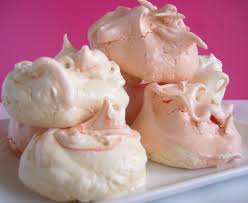
Pink meringues. Source: misslemon.eu
Further down the line, it takes on marshmallow style sweetness and becomes pillowy, soft and a tad powdery in texture. The overall effect is delectable but not quite edible, like a pâtissier’s grand confection that looks too fabulous to eat. It’s super pretty and brings to mind pastel shades of pink, lemon and baby blue. Effortlessly elegant, you could wear it with jeans and a T-shirt and instantly feel pulled together. It’s a “go anywhere, do anything” type of perfume that still has heaps of style.
The Candy Perfume Boy experienced the fruits, smokiness, and “wine-like” aspects that I did, but Angélique ultimately is an iris scent for him. His review read, in part, as follows:
In the opening stages, Angélique portrays an earthy iris touched by wine-like mimosa. It’s air is thick with sweet pollen and spicy black pepper, making for a textured mix of contemporary fizz. This creates an interesting tension where one half of the fragrance feels subdued, almost as if it is slumbering softly, whilst the other is positively alive and buzzing with kinetic energy.
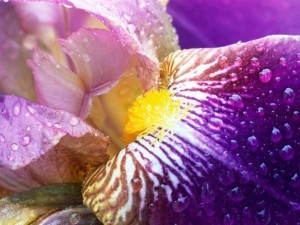
Source: hdwallpapers4desktop.com
The fruity aspect comes from the chewy apricot melody of osmanthus. Here it is less jammy than it usually is and more stewed. Incense adds a cool, grey feel supported by a silky suede undertone that spans most of Angélique’s development. It is the most unusual take on iris I have tried to date and one would imagine that it would be the most divisive of the three Papillon perfumes. But polarising perfumes are arguably the very best and this one will certainly have people talking. Personally, I think it is fabulous – a truly pale iris of the highest order.
As you can see from all these accounts, Angélique is a chameleon that switches from the dried leaves and violets of one review, to the pastels and patisserie in another, and the iris-centric with wined fruits and incense of the last. Only one person mentions the champaca in passing, and absolutely no-one talks about the woods.
My experience is obviously quite different than that recounted by the British bloggers, but I think that if any of the descriptions sound appealing, you should try the perfume for yourself. Even if you’re a man and the name “Angélique” makes it sound like it’s going to be too feminine, you still may want to consider sampling the fragrance because of its shifting nature and its masculine elements. Don’t do what I did, which is to dismiss it right off the bat because of the name.
And I did, you know. Between the name and the note list, I thought to myself, “Eh… angelic. It’s going to be such an airy, light floral. Totally feminine. No thanks.” I walked away entirely. When I placed my order with Indigo Perfumery, I selected 5 fragrances (the Indigo Sample Set is such a great idea!), but never once was I tempted to buy Angélique. Had it not been for the kindness and generosity of Ann, Indigo’s owner, in adding Angélique as a lovely extra, I would quite happily gone on my way without ever considering the perfume. I mean, really, do I seem like the sort who would wear a perfume called Angélique?! It would be like Darth Vader putting on a tutu.
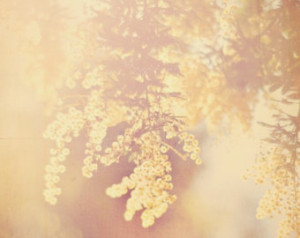
Photo and source: Myan Soffia at Sixthandmain Etsy boutique. (Website link embedded within.)
My preconceived notions were foolish, and it would have been a shame not to have experienced Angélique. As it turns out, some parts of it are really lovely, even for someone with my tastes. In fact, in my first test when the mimosa was exquisitely heavy and before the drydown went south on me, I suddenly became quite convinced that I needed a large decant. Honestly, that mimosa was really something else in the beginning! Plus, the champaca-magnolia was lush and just perfect (it isn’t aways!), while the liqueured fruits were never cloying or overly sweet. I was even starting to have small dreams of how Angelique may be my version of a perfect “vanilla,” thanks to the florals, dryness, smoky woods, and other elements. Well, my feelings changed by the drydown, and again when I applied greater quantities of the scent, but I’m still glad I tried Angélique. Extremely glad.
In short, Angélique is a chameleon that can’t be easily categorized, but which I definitely recommend trying if any of the individual elements appeal to you. It’s more than just an iris scent, or a purely feminine floral, and I suspect a few of you may end up being very happily surprised.

